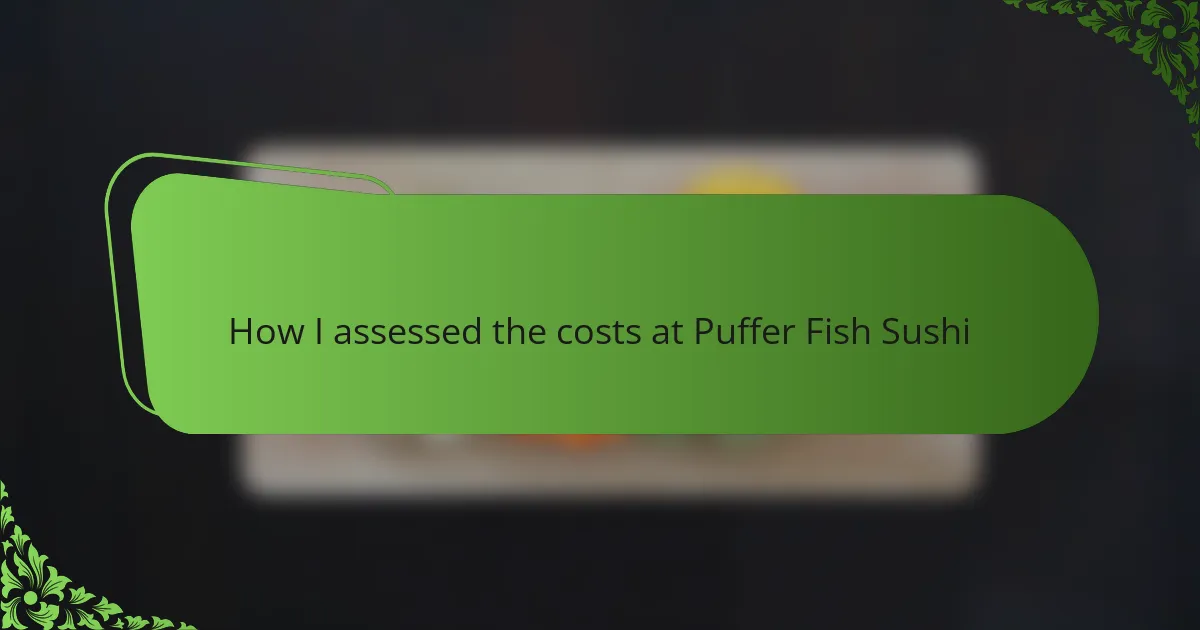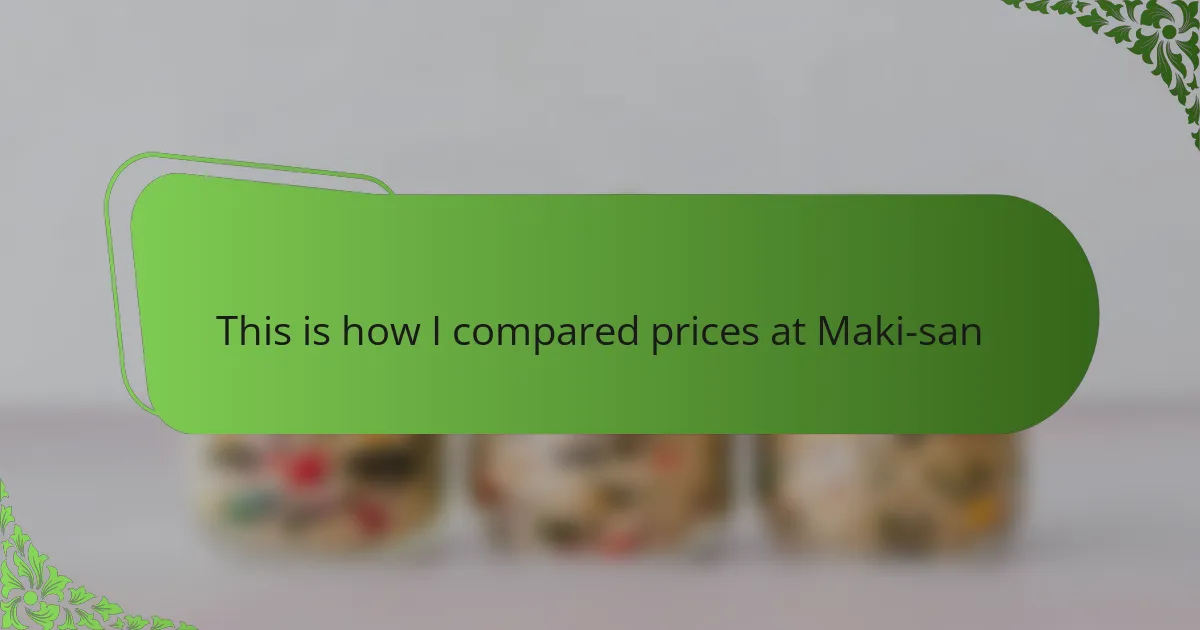Key takeaways
- Sushi restaurant reviews emphasize the dining experience, including atmosphere, service, and ingredient quality.
- The cost of sushi is influenced by ingredient freshness, chef skill, and overall dining ambiance, not just menu prices.
- Transparent pricing and clear explanations for costs enhance customer satisfaction and perceived value.
- Intangible factors like attentive service and a calming environment can make higher prices feel justified and memorable.
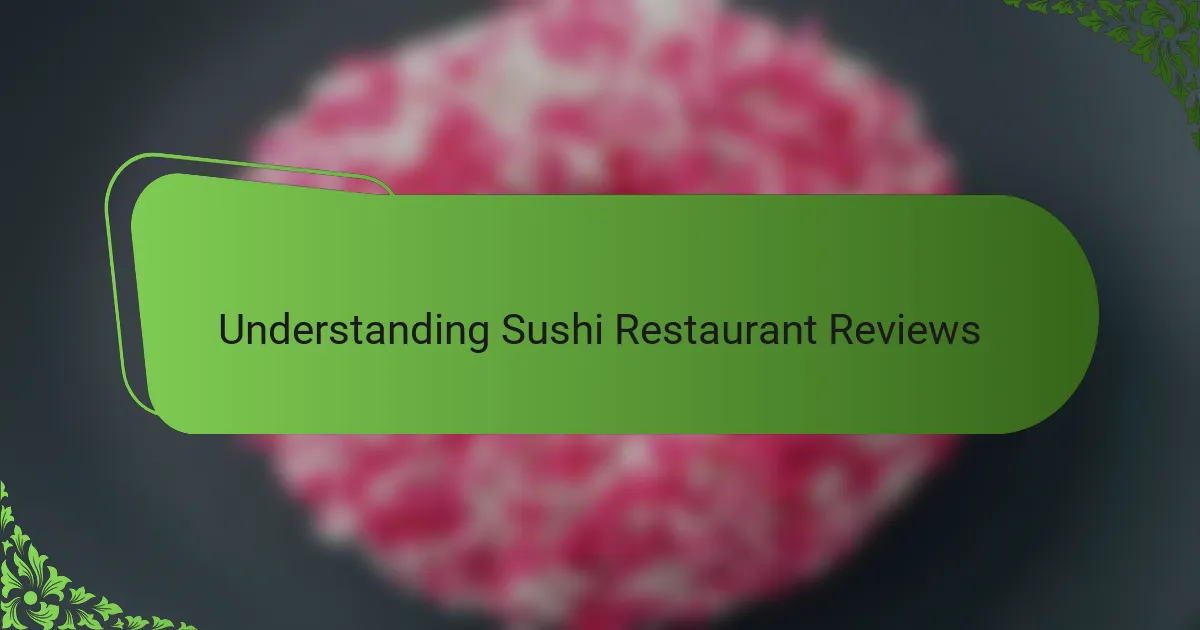
Understanding Sushi Restaurant Reviews
When I first started reading sushi restaurant reviews, I quickly realized they’re more than just a list of dishes and prices. Reviews capture the atmosphere, service, and subtle details like the freshness of the fish or the skill in rice preparation. Have you ever noticed how a simple comment about ambience can completely change your expectation of the meal?
I’ve found that understanding these reviews requires reading between the lines. A mention of “authentic flavors” or “friendly staff” often points to an experience that goes beyond food alone. It made me appreciate that reviews are as much about how the experience feels as what ends up on the plate.
Isn’t it intriguing how one reviewer’s “perfect balance” can mean something different to another? This subjectivity taught me to look for patterns in reviews instead of focusing on a single opinion. It’s almost like getting different perspectives on a story, which helps me make a confident decision before stepping into any sushi bar.
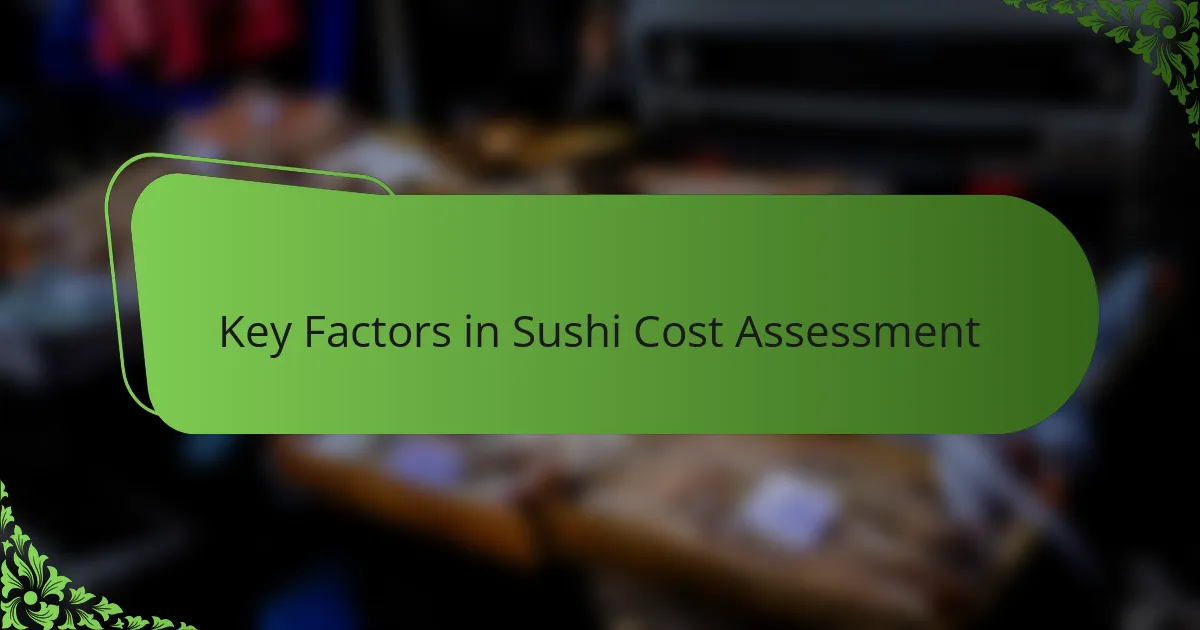
Key Factors in Sushi Cost Assessment
Cost assessment at a sushi restaurant like Puffer Fish Sushi goes beyond glancing at the menu prices. I always consider the quality of ingredients, especially the fish’s freshness, because I’ve found that superior seafood justifies a higher price in ways that cheap substitutes never do. Have you ever paid a bit more only to savor a melt-in-your-mouth piece of toro? That difference sticks with you.
Another factor I weigh heavily is the craftsmanship behind each sushi piece. Skilled chefs who expertly balance rice texture and fish flavor add undeniable value. From my experience, watching a sushi master at work transforms the meal into an artful experience that echoes in the cost. Isn’t it worth paying for that kind of dedication and precision?
Then there’s the overall dining atmosphere and service quality, which subtly influence how I interpret cost. Even if the sushi is excellent, a rushed or unfriendly environment can make prices feel steep, whereas warm hospitality can make a slightly higher bill feel completely fair. This human element often shapes my impression of value more than I initially expected.
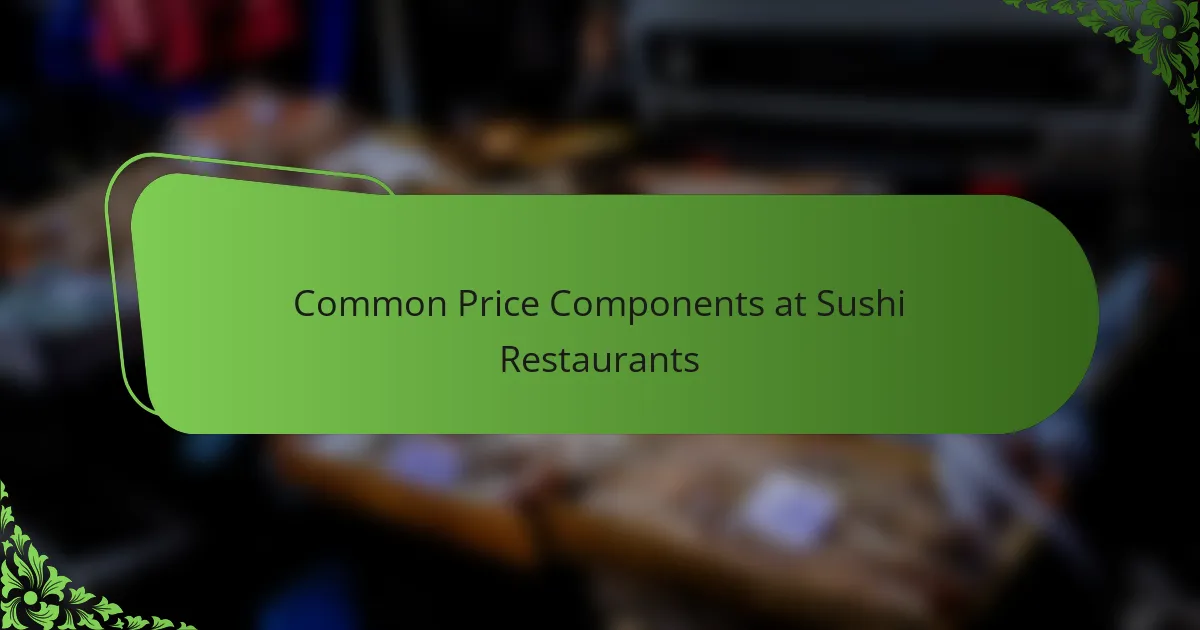
Common Price Components at Sushi Restaurants
Prices at sushi restaurants usually reflect a mix of ingredient quality and preparation skill. I’ve noticed that fresh, high-grade fish—like uni or otoro—can quickly push costs up, but it’s the kind of expense I’m willing to accept when each bite just melts. Don’t you think paying more makes sense when the raw material is this exceptional?
Then there’s the rice, which often gets overlooked but is critical to the sushi experience. From my visits, I can tell when chefs have spent time perfecting the seasoning and texture. That attention to detail logically shows up in the price and means you’re paying for more than just fish—it’s craftsmanship.
Finally, I always factor in service and ambiance as part of the price equation. On one occasion, a quietly sophisticated vibe paired with attentive staff made the entire meal feel like a special occasion. Haven’t you experienced a meal where the setting made you accept a higher price without hesitation? It’s all connected in how value is perceived.

Criteria for Evaluating Sushi Pricing
When I assess sushi pricing, I first look at transparency in the menu—are the prices clearly tied to specific fish grades or special preparations? It’s frustrating when prices seem arbitrary, and that’s usually a red flag for me. Don’t you appreciate it when a restaurant explains why their omakase experiences cost more? That clarity makes me feel respected as a customer.
Another important criterion is portion size relative to price. I’ve found that some places charge premium rates but serve minimal portions, which can leave me feeling shortchanged. Have you ever left a sushi spot wondering if you got your money’s worth because the nigiri felt more like a bite than a satisfying piece? For me, fair portioning is a signal of thoughtful pricing.
Lastly, I consider the restaurant’s reputation and chef expertise as hidden cost factors. In my experience, dining at a place helmed by a renowned sushi chef justifies a higher price point—it’s like paying for years of skill and tradition condensed into each bite. Would you pay extra to experience that level of mastery firsthand? I certainly would, and that often shapes how I perceive the price tag.
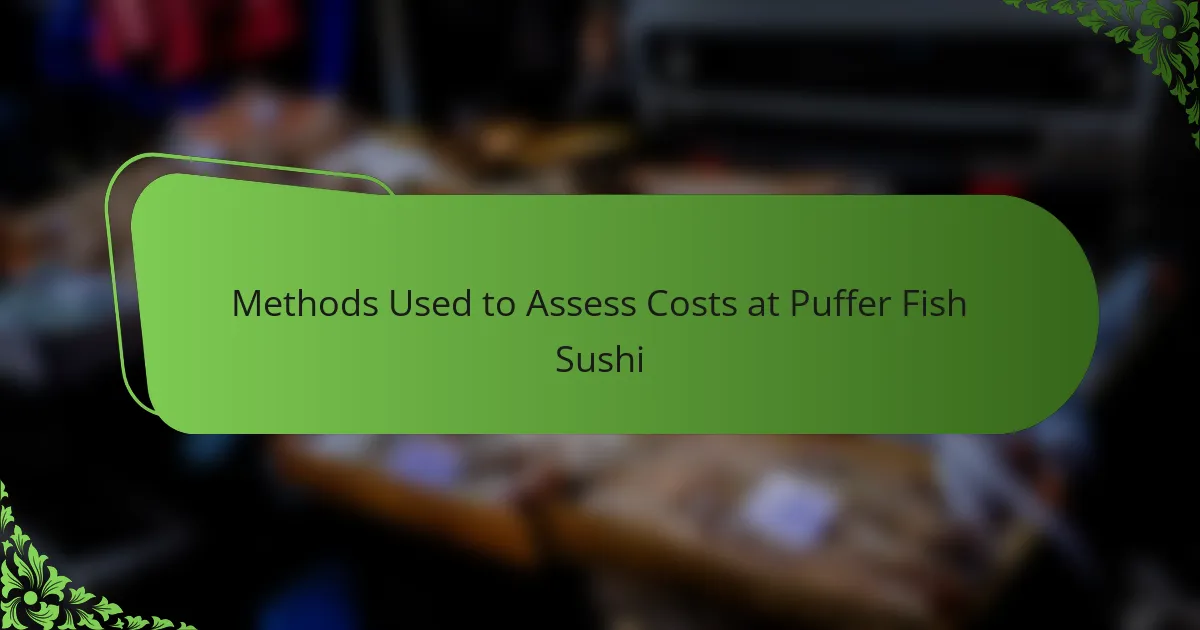
Methods Used to Assess Costs at Puffer Fish Sushi
I started my cost assessment at Puffer Fish Sushi by closely examining their menu alongside the bill. I noted how each sushi type was priced, then compared that with the portion size and ingredient description, which helped me feel confident about where the value really lay. Have you ever felt puzzled by a menu that lists fancy names but doesn’t explain the price differences? This method cut through that confusion for me.
Next, I made it a point to observe the chef at work. Watching the precision in how they sliced fish and formed each piece of rice made me realize that some of the cost wasn’t just for ingredients but for skill and time invested. That hands-on insight changed how I interpreted the pricing — it wasn’t just dollars, but dedication.
Lastly, I reflected on my dining experience from start to finish—service speed, staff friendliness, and overall comfort. I’ve learned that these subtle elements shape how fair or steep a price feels. Don’t you find that a welcoming atmosphere can make an expensive meal feel like a smart investment? For me, these intangible factors played a major role in how I assessed the total cost at Puffer Fish Sushi.

Personal Experience Assessing Prices at Puffer Fish
At Puffer Fish Sushi, I remember pausing to really think about the price tags as I enjoyed each piece. It wasn’t just about numbers—it felt like I was paying for a story told through flavor and technique. Have you ever experienced a meal where the cost suddenly makes sense because of the care behind it? That’s exactly what happened to me here.
One moment that stuck with me was watching the chef’s hands move with effortless precision. Seeing that craftsmanship live made me appreciate how each dollar covered more than just ingredients; it covered years of training and patience. Don’t you think paying for skill adds another layer of value to sushi?
I also noticed how the staff’s warm attention and the calm ambiance softened the usual sharp edge of restaurant pricing. It made me feel comfortable with the bill rather than shocked by it. Have you ever walked away thinking the experience justified every penny? That feeling was real for me at Puffer Fish Sushi, shaping my whole view of the costs involved.

Insights Gained from Puffer Fish Sushi Cost Review
Reflecting on my cost review of Puffer Fish Sushi, I realized how deeply intertwined price is with the entire dining journey. It wasn’t just the numbers on the menu that counted, but the story behind each piece—the freshness, the chef’s skill, and even the atmosphere all played a role. Have you ever found yourself comforted by how these elements justify the price, making it feel less like spending and more like investing in an experience?
What really struck me was how the transparency and fairness in Puffer Fish’s pricing mirrored their commitment to quality. Knowing exactly what I was paying for—whether it was a rare cut of fish or extra attention in preparation—gave me confidence. From my experience, that clarity is rare and makes all the difference in feeling valued as a diner.
Finally, the subtle yet impactful details, like attentive service and a calming ambiance, softened the cost edge. I often find that when these intangible factors resonate, the price feels fairer and even reasonable. Doesn’t a welcoming environment sometimes turn a potentially pricey meal into a cherished memory? That’s exactly the insight I gained from assessing Puffer Fish Sushi’s costs.
